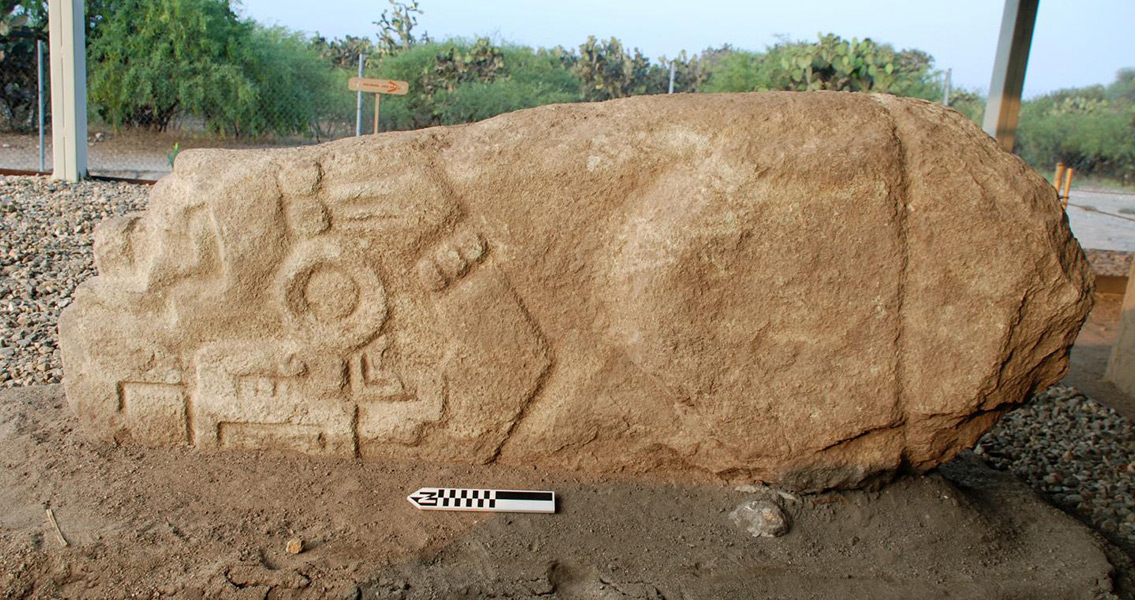<![CDATA[When the ancient city of Lambityeco (500 CE - 850 CE) was first excavated in the 1960s, archaeologists discovered evidence suggesting the society who had lived there held close ties with Monte Albán: a nearby, albeit much larger settlement in what today is Tlacolula de Matamoros, Oaxaca, Mexico. With findings that both supported and contradicted this narrative, it was determined Lambityeco was occupied after Monte Albán, and this interpretation has remained undisputed for decades. Now, archaeologists with the Field Museum have returned to the site to conduct additional excavations, and their findings have provided evidence which is challenging this long-held belief. The recent reanalysis of material previously unearthed at the site in Lambityeco suggests the two cities were in fact contemporaries. During the past four years, Gary Feinman and Linda Nicholas with the Field Museum, working in collaboration with Mexico's National Institute of Anthropology and History, have led excavations beyond the previous work and discovered a far richer history than originally believed. For example, when Lambityeco was first settled, it is apparent that the public buildings were laid out in a pattern closely resembling Monte Albán. However, at some point, the ceremonial center of Lambityeco underwent a major reorganization in the way the space was utilized. The architecture was modified to the point that it no longer resembled the construction pattern of the larger settlement. "During this time period, the relationship between Lambityeco and Monte Albán shifted," Feinman said in a press release from the Museum, "The people of Lambityeco began to remodel their buildings and reorient the use of space in order to differentiate themselves from Monte Albán." The evidence collected during these recent excavations illustrates this adjustment. One significant feature at Lambityeco that underwent a dramatic change was its ball court, an important ceremonial and recreational structure in prehispanic Mesoamerica. Originally, the ball court at Lambityeco (discovered in 2015 by the museum team) was designed and laid out in a pattern that was very similar to the way the ball court in Monte Albán had been; they were built with the same orientation and both were entered on the north side. Less than two centuries later, however, the people of Lambityeco sealed the north entrance to the ball court there, and created a new stairway on one of its corners, a major change. Around the same time the iconic frescos, one of the findings that originally seemed to connect the two settlements, were covered and never re-created. Another finding that illustrates the alterations at Lambityeco is a recently discovered large stone with the image of a crocodile carved on three sides, the largest carved stone found at Lambityeco to date. Although comparable crocodile stones have been unearthed elsewhere in the Valley of Oaxaca, this discovery was unique. One of a few such carvings to be found in its prehispanic context, the Field Museum researchers also learned the stone had been relocated from its original location while Lambityeco was occupied. "We believe that this crocodile stone was originally a part of a stairway leading up to a temple at the heart of the civic-ceremonial center of Lambityeco", Nicholas said in the press release. “However, when the people reconstructed the core area of the site, the entrance to the temple was blocked and the stairway was dismantled." As new evidence accumulates, so do the questions, foremost among them: What caused the rift between Monte Albán and Lambityeco? One fact, however, remains true. In its short history, Lambityeco played an important role in the ancient Valley of Oaxaca. Image courtesy of © Linda Nicholas, The Field Museum]]>
New Findings Have Archaeologists Rethinking Valley of Oaxaca History
